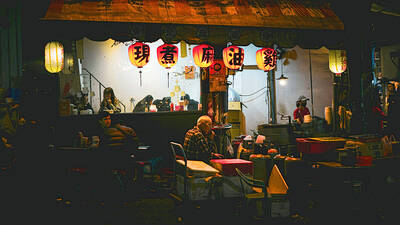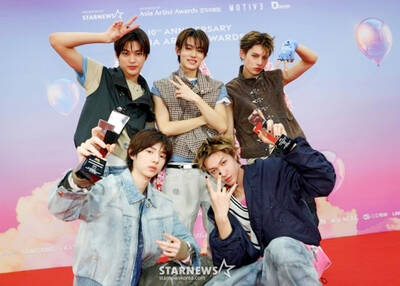Tattooed hands used to be how Paiwan and Rukai women showed their nobility, how much they were liked and their purity. During the Japanese era, however, the tradition was looked down upon, fines were issued and it was forbidden. It became very rare that women wanted to have their hands covered with beautiful tattoos. The old tradition now lives on in only three old women in the Nanhui tribe of the eastern Paiwan, and this is cause of concern for old tribal culture.
Kao Cheng-chih, a Paiwan tribal chief and director of the Paiwan health center in Chinfeng Township, Taitung County, has studied the hand tattoo tradition. He says hand tattoos are a Paiwan and Rukai sign of nobility and privilege, and that it was restricted to daughters of tribal chiefs and nobility. Any common tribal member who wanted to gain this right had to pay a high price and also invite all tribal members to a banquet to gain their approval. The tattoos, however, would still be different from the nobility’s.
The pain suffered by the girls during the tattooing highlights their nobility and honor, and it also emphasizes their pre-marriage purity and their ability to work hard and suffer hardship after getting married. In addition, the girls also hoped it would improve their marriage prospects. Kao says the process involves many taboos. Before it begins, the shaman must pray for luck and ask for the gods’ blessing. Pregnant women are not allowed to watch the ritual, and anyone present is not allowed to sneeze or pass wind. If any of the taboos are broken, the ritual must come to a temporary stop and another day will have to be chosen for its continuation.
“Clothes can be changed and you may die, but hand tattoos stay with you for a lifetime and even in death.” Ninety-six-year old Wen Chin-niao is the oldest member of the Baomuli tribe in Chenghsing Township and the only one there with tattooed hands. The beautiful tattoos were given to her when she was married into the Baomuli clan at age 14 because, following tradition, her parents wanted to congratulate her on reaching adulthood.
Although the tattoos on the back of her hands have faded with time, Wen still clearly remembers the pain and the significance of the tattoo. Lightly stroking the back of her hands, she says it was a painful procedure. She recalls that the needle was made from thorns off the trunk of an orange tree and that the tattoo was made by hitting on the needle with a wooden club. The blood was then wiped off the hand, and soot from the bottom of a pot was spread over the tattoo. The whole process took two days, and it then took more than two weeks for the swollen hands to return to normal.
Wen says the tattoos are the mark of a chieftain, and that in the past, all young girls had to have their hands tattooed. The shaman making the tattoo would apply different patterns depending on the girl’s background. Hand tattoos are a witness to tradition and history. These tattoos have followed Wen through her long life, and although they have faded over time, they remain her most beautiful memory.
(LIBERTY TIMES, TRANSLATED BY PERRY SVENSSON)
紋手是古時排灣、魯凱族婦女展現貴族位階、受寵地位及貞潔的最美象徵,但日治時代被日本人刻意醜化、歧視處罰而禁止後,即少有婦女願意在手背紋上這美麗的印記,目前東排灣南迴各部落僅剩三名年老婦人仍保有這項傳統,舊部落文化式微令人憂心。
對紋手傳統有深入研究的金峰鄉排灣族籍衛生所主任、介達「卡拉達蘭」部落頭目高正治表示,紋手是排灣、魯凱兩族群貴族特權的展現,只有頭目與貴族少女才能擁有這項權利,若平民階層欲交換此權,必須付出珍寶作代價,並宴請所有族人博取認同,但刺紋仍與貴族有所區別。
少女忍痛紋手,除為彰顯尊貴與榮耀,強調婚前純潔、婚後勤勞肯吃苦的表徵,她們也希望藉此獲得美滿姻緣,嫁個好兒郎。高正治說,紋手過程禁忌多,行儀前施術者必須先向神靈祈福求庇佑,才得以開始刺紋,且施術過程不得有孕婦旁觀,在場者也不能打噴嚏與放屁,只要觸犯任何一項,儀式就必須暫停擇日再行。
「衣服隨時都可以替換,死了也帶不走,但紋手卻會伴隨一輩子,就算死了也一樣。」高齡九十六歲的溫金鳥是正興村包慕里部落最年長、也是部落裡唯一紋手的老人,這個美麗的印記,是她在十四歲嫁入包慕里家族前,父母為了祝福她長大成人而依傳統行術。
雖然隨著時光的消逝,手背上圖文已漸趨模糊,但紋手時的錐心刺痛及代表意涵,溫金鳥至今仍能清楚感受,她輕輕的撫摸手背說,紋手過程相當疼痛,她記得當時是以橘子樹幹上的刺綑綁成刺針,再以木棒在手背上敲打刺紋,接著擦拭手背上的流血,最後塗抹上鍋底黑灰,前後花費兩天的光景才完成,兩隻手腫了半個多月才恢復。
溫金鳥說,紋手是頭目的記號,古時未婚少女都必須依傳統紋手,而施術巫師會以少女身分背景,給予不同紋案。紋手是一種傳統、一種歷史見證,這個烙印已陪著她走過漫漫歲月,雖已漸趨模糊,卻是她今生最美的一段紀念。(自由時報記者陳賢義)

★ Bilingual Story is a fictionalized account. 雙語故事部分內容純屬虛構。 “Any New Year’s resolutions?” he asked. Lena put her coffee down. “Yeah,” she said. “To get in shape.... round is a shape, right?” Mark chuckled. “I support this. Fully achievable. Low risk.” “Thanks,” she smiled and lovingly rubbed her round belly. “I like a resolution I can’t fail.” “Funny thing is, I was thinking about getting round too.” Lena nodded her head in approval, “You could put some meat on those skinny bones of yours.” Mark shook his head, “Not that kind of round. Wheel-of-Life round.” She raised an eyebrow.

Skating is a popular recreational and competitive activity that involves sliding over surfaces using specially designed footwear. Its origins date back over 1,000 years to Northern Europe, where people first strapped animal bones to their feet to move across frozen lakes and rivers. In the 17th century, the Dutch transformed skating into a leisure activity. They also replaced bone blades with metal, leading to the creation of modern ice skates. Today, ice skating is enjoyed as a global sport and an exciting pastime by people of all ages. Figure skating is one of the best-known and most graceful forms of skating.

對話 Dialogue 清清:最近天氣越來越冷,感覺很容易感冒,要不要一起去吃薑母鴨或是羊肉爐? Qīngqing: Zuìjìn tiānqì yuèláiyuè lěng, gǎnjué hěn róngyì gǎnmào, yào bú yào yìqǐ qù chī jiāngmǔyā huòshì yángròulú? 華華:最近我覺得有點累,想吃薑母鴨,可是又怕一下子吃太補會上火。 Huáhua: Zuìjìn wǒ juéde yǒudiǎn lèi, xiǎng chī jiāngmǔyā, kěshì yòu pà yíxiàzi chī tài bǔ huì shànghuǒ. 清清:那我們去喝香菇雞湯吧,不太容易上火,喝了也會很暖和。 Qīngqing: Nà wǒmen qù hē xiānggū jītāng ba, bú tài róngyì shànghuǒ, hē le yě huì hěn nuǎnhuo. 華華:聽起來不錯!你們家平常冬天都吃什麼進補? Huáhua: Tīng qǐlái búcuò! Nǐmen jiā píngcháng dōngtiān dōu chī shénme jìnbǔ? 清清:我家都煮麻油雞,吃完整個人手腳都會熱起來。我也很久沒喝香菇雞湯了,正好可以去打打牙祭。 Qīngqing: Wǒ jiā dōu zhǔ máyóujī, chī wán zhěnggè rén shǒujiǎo dōu huì rè qǐlái. Wǒ yě hěn jiǔ méi hē xiānggū jītāng le, zhènghǎo kěyǐ qù dǎ dǎ yájì. 華華:可是我最近在減肥,會不會吃得太補,肉又長回來了? Huáhua: Kěshì wǒ zuìjìn zài jiǎnféi, huì bú

A: South Korea’s Golden Disc Awards ceremony is taking place at the Taipei Dome on Saturday. Eighteen acts are taking to the stage, including Blackpink’s Jennie. B: The hottest boy group CORTIS is also performing. I can’t wait to see James, the Taiwanese member of the band, perform. A: Who else are playing at the K-pop show? B: This year’s lineup is stacked, including: Allday Project, ARrC, Ateez, Boynextdoor, Close Your Eyes, Enhypen, IVE, Izna, KiiiKiii, Le Sserafim, Monsta X, NCT Wish, Stray Kids, TWS, Zerobaseone and Zozazz. A: SKZ, Enhypen and Ateez dominated Billboard’s 2025 Year-End World